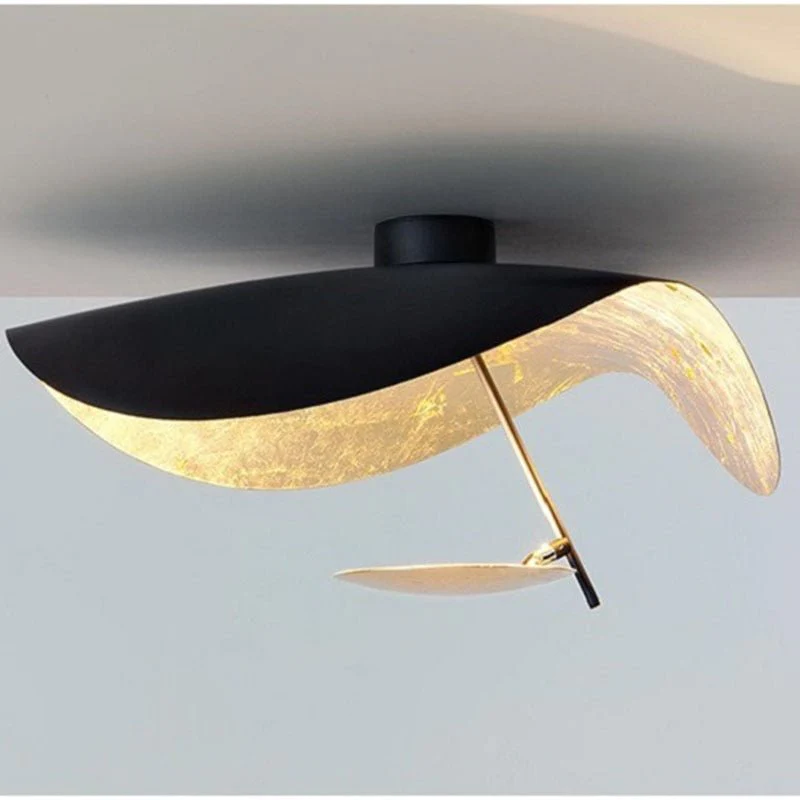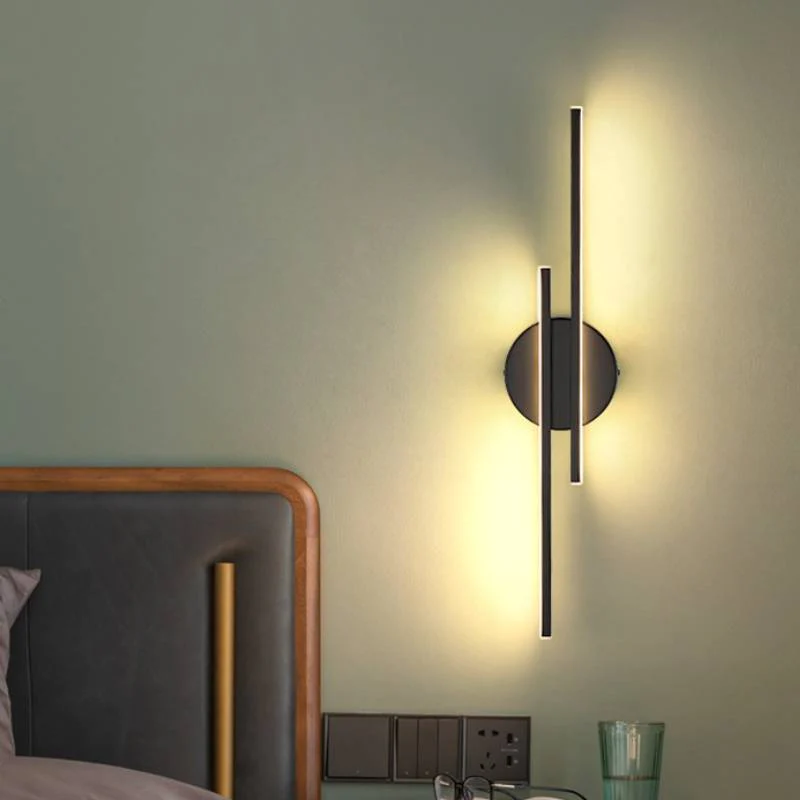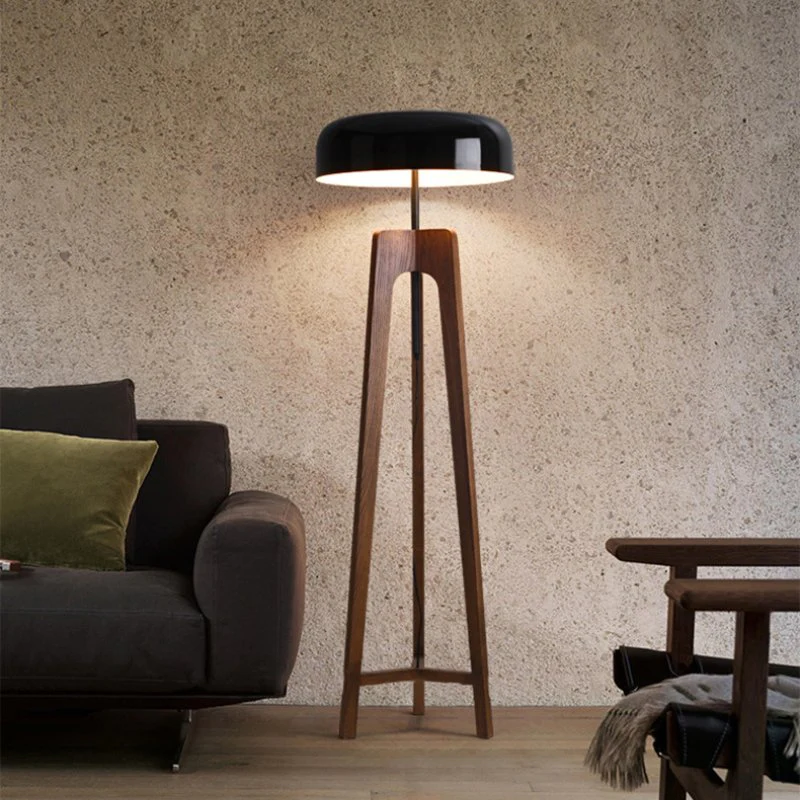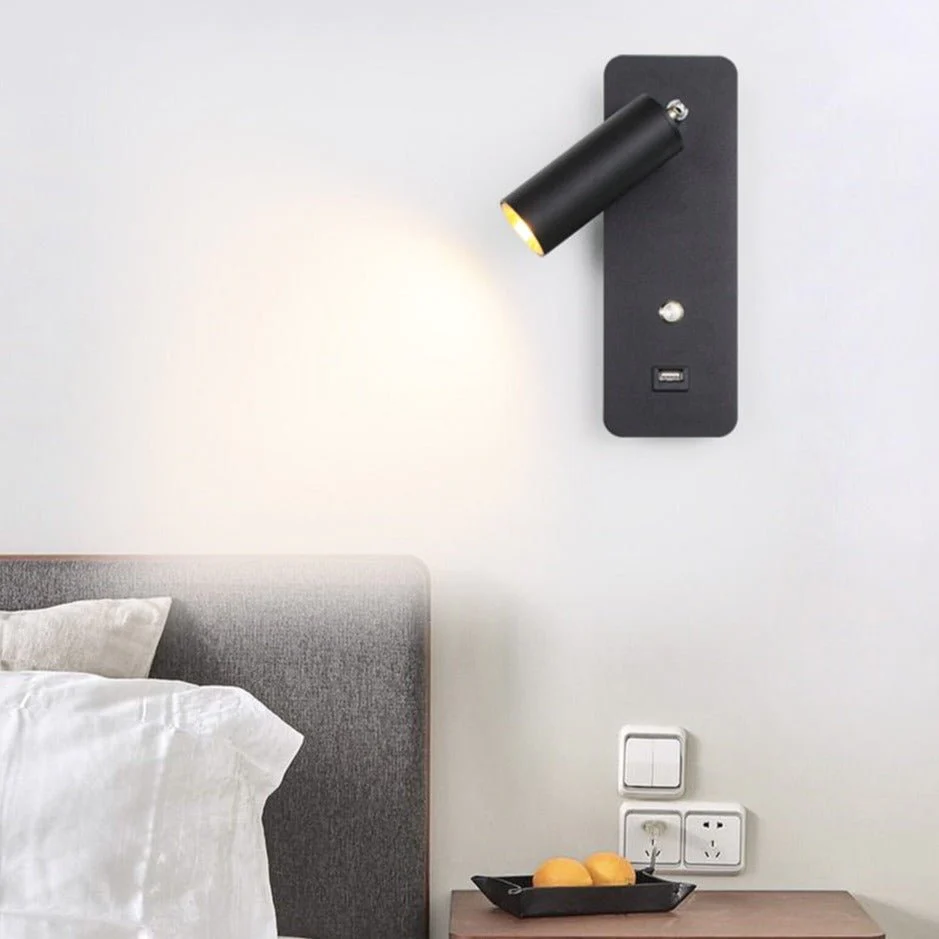This post contains affiliate links. If you make a purchase through these links, I might make a small commission at no extra cost to you. In fact, you get a 10% discount using the code “ZACH”. Thanks for the support and hope you enjoy the read!
LED lights are becoming more and more popular for good reason. From aesthetics to installation, in this article, we will discuss everything you need to know about LED lights for the bedroom.
Let’s dive into it!

Top Advantages Of LED Lights
Check out this awesome infographic I made!

Energy Efficiency
LED lights are renowned for their energy efficiency, consuming significantly less power than traditional lighting options. This not only translates to reduced electricity bills but also aligns with eco-friendly practices, making them an excellent choice for the environmentally conscious.
Longevity
One of the standout features of LED lights is their impressive lifespan. Unlike incandescent bulbs that need frequent replacements, LED lights can last for tens of thousands of hours, providing consistent illumination over the long haul.
Eco-friendliness
Beyond energy efficiency, LED lights are environmentally friendly throughout their lifecycle. They contain no hazardous materials, and their energy-saving qualities contribute to a smaller carbon footprint, making them a sustainable choice for your bedroom lighting needs.
Versatility
LEDs come in so many shapes, sizes, and colors that you might have a hard time choosing. This versatility is a huge advantage of LEDs compared to their counterparts, especially if you also include all the smart options they come with, such as compatibility with remotes or apps. Always go for dimmable LEDs!
Choose The Best LED Lights For The Bedroom
I will help you choose some of the best LED fixtures on the market, but first, you need to make sure you know the following:
Color temperature
Color temperature is a property of bulbs that determines how “blue” or “orange” the light is. It is measured on the Kelvin scale, with lower temperatures (up to 3000 K) being warmer or more yellowish, and higher temperatures (4000 K and up) being cooler or more blueish.
Cooler light helps with focus and productivity, while warmer light is best for creating a cozy and relaxing atmosphere.
The best color temperature for bedrooms is 2700-3000 K.
Brightness
Lumens is the measure used to determine the brightness of a light source. For the bedroom, ambient light (the main light source used to light up the room, such as a flush mount light) should be about 15 lumens per square foot (or 180 lumens per square meter). Task lighting, such as the lamp on your bedside table, should be about 35 lumens per square foot (or 380 lumens per square meter) of your task area. LED strips should be 200-500 lumens per foot (600-1600 lumens per meter) and definitely connected to a dimmer switch.
Pro Tip: Read the following guide to determine exactly how many lumens you need for your bedroom!
Color Rendering Index
The color rendering index (CRI) measures how accurately a light source renders the colors of objects compared to a natural light source on a scale from 0 to 100.
Higher CRI values mean truer and more vibrant colors. Or in other words, our perception of the colors under high-CRI lighting approaches the actual color as best as possible. Although I would suggest a CRI of 90 or higher, read the following article to figure out the best CRI for LEDs.
Smart features
Consider incorporating smart LED lights into your bedroom setup for added convenience. With features like remote control and compatibility with virtual assistants, you can effortlessly customize your lighting experience without leaving the comfort of your bed!
Best LEDs for ambient lighting
Ambient light comes from the main source of light in your bedroom. The most common fixtures for ambient light are:
1. Chandeliers
2. Pendants
3. Flush Mount Lights
4. And cove lighting

You can read this guide if you want to install cove lighting yourself, but I would suggest calling in an expert.
Also, you can check out my guide to the best ceiling lights for the bedroom for a more comprehensive review of your different options.
Best LEDs for task lighting
Task lighting is used for performing specific activities, like reading a book in bed or putting on makeup. Below is a selection of the best LED fixtures that can be used for task lighting.
1. Table lamps for bedside table
2. Bedside sconces
3. Floor lamps
4. Swing-arm sconces
Best LEDs for accent lighting
Accent lighting is used to place emphasis on certain design elements and make the space more inviting. Think of picture lights, LED strips under the bed, wall light art, or plant uplighters.
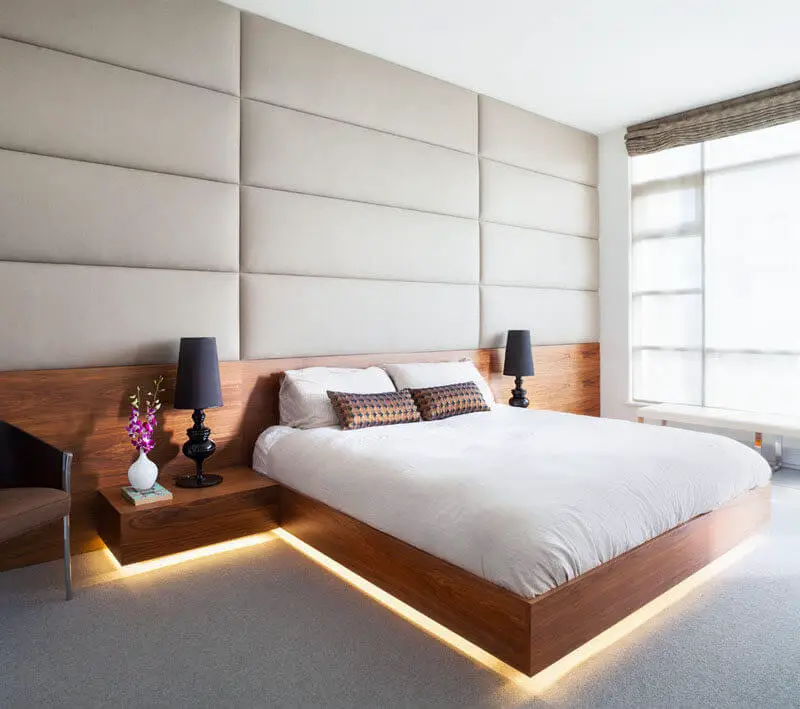
LED Installation
Fixture compatibility
Before diving into the installation process, ensure that your fixtures are compatible with LED lights. Some fixtures may require minor modifications or adapters to accommodate LED bulbs properly.
DIY vs. professional installation
While many LED lighting installations can be tackled as DIY projects, complex setups may benefit from professional expertise. Assess the complexity of your desired lighting arrangement and decide whether a professional touch is warranted for optimal results.
Best placement for LEDs
Here is a list of the best positions in your bedroom for LEDs:
- Over the bed, hanging from the ceiling
- Under the bed (LED strips) with motion sensor
- On your bedside table
- Inside the closet with motion sensor
- Above the bedside as sconces
- Large floor lamps in the corners of the bedroom
- Behind plants for dramatic effect
- Light art on empty wall
Maintenance and Care
Cleaning
To maintain optimal performance, periodic cleaning of LED lights is essential. Use a soft, dry cloth to remove dust and prevent any hindrance to the light output. Regular cleaning ensures your bedroom remains well-lit and inviting.
Troubleshooting common issues
Address common issues promptly, such as flickering or dimming lights. Check for loose connections or battery life in the case of rechargeable lights, and if problems persist, consult the manufacturer’s troubleshooting guide or seek professional assistance to rectify any issues.
Impact on Sleep Quality
Blue Light Effects
Be mindful of the impact of blue light on sleep quality. Consider using dimmable LED lights with warmer tones in the evening to create a calming atmosphere conducive to a good night’s sleep. LEDs do not have a negative impact on sleep quality. In fact, they are considered some of the best light bulbs for sleeping!
Using Dimmers for Bedtime
Incorporate dimmer switches into your bedroom lighting setup to gradually reduce brightness as bedtime approaches. This gentle transition prepares your body for sleep and enhances the overall quality of your rest.
Wrapping up
LED lights for the bedroom offer a perfect blend of style, efficiency, and customization. From creating a cozy ambiance to incorporating smart features, the possibilities are endless. Embrace the future of bedroom lighting with LED technology, and let your personal space shine brightly.
Frequently Asked Questions (FAQs)
Are LED lights suitable for all types of fixtures in the bedroom?
LED lights are versatile and compatible with most fixtures. However, it’s essential to ensure compatibility before installation.
Do LED lights contribute to better sleep quality?
Yes, LED lights with warm tones and dimming features can positively impact sleep quality by creating a relaxing bedtime environment.
How can I troubleshoot flickering or dimming LED lights?
Check for loose connections and consult the manufacturer’s troubleshooting guide. If issues persist, seek professional assistance.
What is the average lifespan of LED lights?
LED lights can last for tens of thousands of hours, providing consistent illumination for an extended period.
Can I recycle LED lights at the end of their lifespan?
Yes, many manufacturers offer recycling programs or guidelines for the proper disposal of LED lights.






